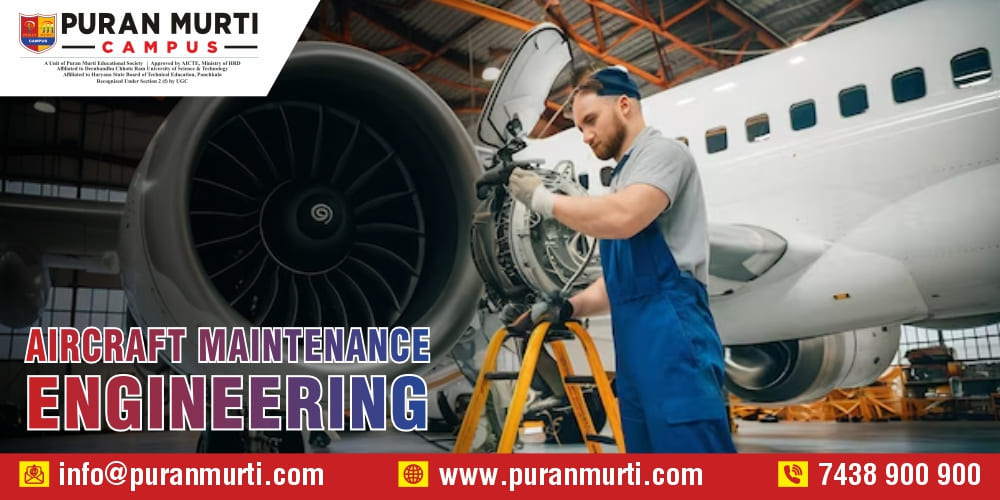An Introduction to Aircraft Engineering: Crafting the Future of Aviation
Posted on : 30 September, 2024 10:46 am
Aircraft engineering is one of the most fascinating and complex fields in modern engineering. It encompasses a broad spectrum of activities, from designing and developing aircraft to ensuring they are safe, efficient, and ready to fly. In an era where air travel has become an essential part of our global society, the role of aircraft engineers is more important than ever. Let’s explore what aircraft engineering entails, its significance, and the exciting developments that are shaping the future of aviation.
What is Aircraft Engineering?
Aircraft engineering is a specialized branch of engineering that deals with the design, construction, testing, and maintenance of aircraft and their systems. Engineers in this field are responsible for everything from the aerodynamics of a plane to the performance of its engines and the safety systems on board.
This discipline covers various types of aircraft, including:
- Commercial Airliners: Planes designed for passenger transport, like Boeing 747s or Airbus A380s.
- Military Aircraft: Fighter jets, bombers, and reconnaissance planes used in defense.
- Helicopters: Vertical lift aircraft used in rescue operations, transport, and military missions.
- Unmanned Aerial Vehicles (UAVs): Drones used for surveillance, agriculture, and delivery systems.
Key Areas of Aircraft Engineering
Aircraft engineering isn’t just about building planes. It involves many different areas of expertise, including:
1. Aerodynamics
Aerodynamics refers to how air interacts with a moving object. Engineers must design aircraft in a way that minimizes drag and maximizes lift, ensuring that planes can fly efficiently. By using wind tunnels and computer simulations, engineers can test how an aircraft’s shape will perform at various speeds and altitudes.
2. Materials and Structures
Modern aircraft are made from lightweight materials such as aluminum alloys, carbon fiber composites, and titanium. Aircraft engineers must select materials that are not only strong but also lightweight, as excess weight can lead to greater fuel consumption.
3. Propulsion Systems
The propulsion system is the heart of an aircraft, responsible for generating the thrust needed for flight. Aircraft engineers work with jet engines, turboprops, or electric propulsion systems to design more powerful, fuel-efficient engines that also meet environmental standards.
4. Avionics and Electrical Systems
Avionics covers all the electronic systems on an aircraft, from navigation to communication. Engineers ensure that these systems work flawlessly to guide the aircraft safely from takeoff to landing. With advancements in automation, avionics systems are becoming increasingly sophisticated, reducing the workload for pilots.
5. Safety and Maintenance
Safety is paramount in aviation. Aircraft engineers develop systems and protocols that allow aircraft to operate under the safest conditions possible. Regular maintenance checks are performed to ensure that everything from the landing gear to the engine is functioning correctly.
The Future of Aircraft Engineering: Trends to Watch
The aviation industry is constantly evolving, and aircraft engineers are at the forefront of some of the most exciting developments. Here are some key trends shaping the future of aircraft engineering:
1. Electric and Hybrid Aircraft
As the world seeks greener solutions, electric and hybrid-electric planes are becoming a major focus in the field. Companies like Rolls-Royce and startups like Eviation are working on aircraft that produce fewer emissions and use less fuel, making air travel more sustainable.
2. Autonomous Aircraft
Unmanned aircraft, or autonomous planes, could soon be a reality. With advancements in artificial intelligence (AI) and machine learning, aircraft might soon be able to take off, navigate, and land without human pilots. This would revolutionize not only commercial air travel but also military and cargo transport.
3. Supersonic Flight
After the Concorde’s retirement, supersonic travel seemed like a thing of the past. However, new companies such as Boom Supersonic are working on developing planes that can travel faster than the speed of sound. This could cut long-haul flight times in half, revolutionizing global travel.
4. Urban Air Mobility
With the rise of urban air mobility (UAM), engineers are developing electric vertical takeoff and landing (eVTOL) aircraft, often referred to as “air taxis.” These vehicles could be a game-changer for urban transportation, helping to reduce congestion and providing faster commute options in large cities.
Challenges in Aircraft Engineering
While the future is bright, aircraft engineering is not without its challenges. Engineers constantly grapple with issues such as:
- Environmental Impact: Reducing carbon emissions and noise pollution is critical as the aviation industry seeks to minimize its environmental footprint.
- Fuel Efficiency: As fuel costs fluctuate, engineers need to create aircraft that are more fuel-efficient while still meeting the demands of speed, range, and payload.
- Safety Concerns: Ensuring safety in an industry that carries millions of passengers daily is no small feat. Engineers must stay ahead of potential threats, such as cyberattacks on aircraft systems and malfunctions in automated flight systems.
Conclusion
Aircraft engineering is a field that combines creativity, technical expertise, and a passion for pushing boundaries. From designing the next generation of eco-friendly planes to making air travel faster and safer, aircraft engineers are crafting the future of aviation. As technology continues to evolve, so too will the opportunities for innovation in the skies, ensuring that flight remains one of the most dynamic and impactful industries of our time.
Whether you’re an aspiring engineer or simply fascinated by aviation, there’s no doubt that aircraft engineering plays a crucial role in shaping the way we travel and connect with the world.

